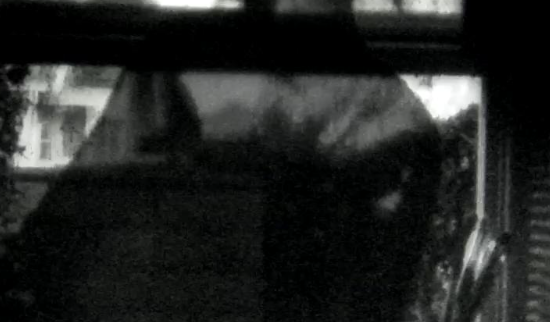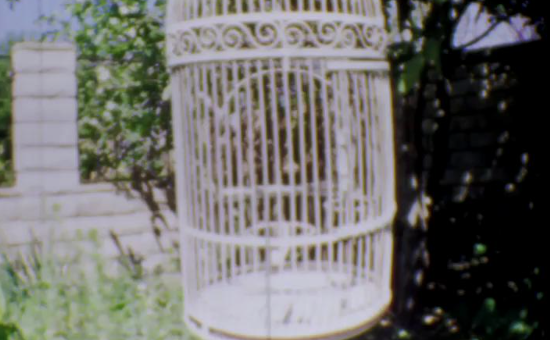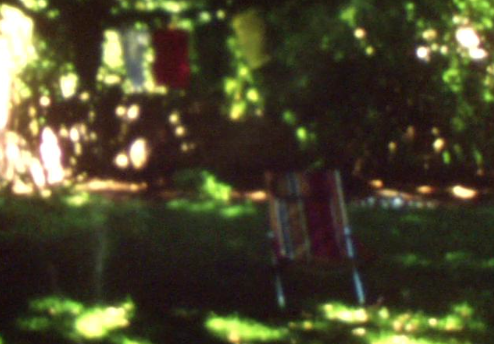Natalia Moscoso is a freelance cinematographer based in Los Angeles. She grew up in San Diego, CA, the first in her family to pursue a film-related career. She graduated from Cal. State University, Northridge with a B.A. in Film & Television Arts. Since graduating, she has shot a plethora of music videos, commercials, short films, and a feature film. She is heavily inspired by cinematographers Rodrigo Prieto and Emmanuel Lubezki, feeling encouraged to see those of her own ethnicity creating such powerful imagery. Focusing more on the psychological part of her cinematography, she is able to expand her style from organic and intimate textures, to dynamically bigger-than-life qualities. Natalia aims to influence and empower more women filmmakers through her visual story-telling, the way her own cinematography idols have impacted her. She continues to expand her network with filmmakers that push her creatively, believing that every story is an important one to tell.
An Interview with Natalia Moscoso:
 How did you initially get started as a cinematographer?
How did you initially get started as a cinematographer?
From a very young age, I knew I wanted to do something in filmmaking. I grew up filming skits with my younger siblings, directing, shooting and editing it all. I fell in love with being able to escape reality through filmmaking, and found I could express myself the loudest through cinematography. It wasn’t until college when I decided to fully invest in myself as a cinematographer. With the leftover money from my college FAFSA, I bought a Sony A7Sii, my first video camera, and started working as a DP. It got me through a lot of my earlier projects and my first reel. During college, I was also able to hop on a plethora of thesis sets from different universities as an AC. On these sets, I learned a lot about camera tech and lighting. Later on, I sold the little Sony camera, as a result of gaining more experience and gaining bigger work. My network started growing as well, and I’ve been fortunate to collaborate with some talented filmmakers. To this day, I have no doubt about my career choice and position in film.
Would you talk more about how cinematographers Rodrigo Prieto and Emmanuel Lubezki have influenced your work?
The first cinematographers to inspire me were Prieto and Lubezki. What stands out the most to me from these two cinematographers is how they shoot close-ups and intimate shots. It all has such an organic feeling to it that is visually unique to the eye. I admire the emotion they have been able to provoke through their style of camera movement and lighting. The first film I remember watching from Prieto was “8-Mile” (2002). The film felt like we were right there with the character, every minute of it. The second film that hit me was “Babel” (2009). I loved how each world had its own different feel, yet the film still felt like one whole piece. As for Lubezki, the first film that stood out for me was “Children of Men” (2006). This film carries one of my most favorite scenes in cinema, which is the car chase one take scene. I have so much respect for the technical knowledge that went into making this complicated sequence. To this day I love seeing the behind the scenes video of creating that entire visual. What strikes me the most about Lubezki is his beautiful use of wide lenses. It gives off such a majestic, yet organic feeling, that I’ve found myself attracted to. I hope to move people in the way that these cinematographers have moved me.
 What do you look for when signing onto a project?
What do you look for when signing onto a project?
When signing onto a project I first look at the topic/content. Is this something I would want to watch? Do I feel a passion or can I relate to the topic? I also try to get a sense of the director and production team, seeing if we are a good collaborating match. I enjoy getting onboard a project that creatively challenges me with either lighting or camera. I also enjoy shooting more moody types of looks, as well as dramas. Plot wise I love narratives where the character has more of an internal antagonist. Going back to my minor in psychology, I really love getting into the headspace of the characters. I live for empowering those on screen and making things feel larger than life, in a natural way. Movement wise I love going handheld, as you get to sense and play off the energy of the actors or artists. It’s like a dance with the camera and your environment. In the end I look forward to working on projects that have more of a personal touch to them, and to collaborate with people who motivate me.
 You’ve worked on a variety of music videos, commercials, and narrative films. Does your approach shift when working in different formats, and if so, how?
You’ve worked on a variety of music videos, commercials, and narrative films. Does your approach shift when working in different formats, and if so, how?
My approach to working in different formats definitely shifts, depending on the project. For music videos I’ll dive into the song and make sure I know what exactly happens in each part of it. For these formats I think you can never have enough footage, so it’s key to get a little extra of what you need, without going overboard. Each music video can vary within itself, but they usually have faster beats when compared to a narrative, so I really try to take that into consideration. I feel that in a music video world, anything can really happen. Things can get cancelled or brought upon at the last minute, more than any other platform. With this in mind, I try to over-prepare myself and have back up plans for lighting set-ups. Being on a plethora of music video sets has definitely toughened me and helped me be prepared for the worse outcomes. It’s made me just always be on my toes and I’m really thankful to have that as a skill.
Narrative is of a similar structure, but for that format I dive more into the minds of the characters. What’s going on psychologically and how can my cinematography alone push the story forward? I enjoy pre-production on narratives a bit more because there’s usually more time to prep, giving me more time on the details of everything and anything. I think I’m able to connect more with the director on narrative work as well due to it having more of a structure and personal touch than most music videos or commercials.
Commercials are a bit of a mix of both these formats. The treatments I’ve gotten for commercials are less specific than that of a narrative piece or music video. Commercials can also have a different on-set workflow, especially if there is a client onboard. In these cases the visuals are more specifically structured and are critiqued more on the set. Personally, these tend to be more relaxed workflows than narrative or music videos. But no matter the format, I enjoy working on all types of projects and genres. They all have one thing in common, and that is to be able to convey emotion through a visual platform.
 Would you describe your work on one of the projects that you’re most proud of?
Would you describe your work on one of the projects that you’re most proud of?
A job I’ve been most proud of is the NPR: Tiny Desk (home) Concert for Roddy Ricch. This was shot at West Coast Customs. Gear wise, our budget wasn’t too heavy, so we definitely had to come up with creative solutions and set-ups. We also didn’t have a finished idea on how the band was really going to be set up/staged, so we were locking down our lighting on the day, a creative challenge for us all. In the end, I was proud of the emotions we conveyed through our wide lens, steadicam movement and lighting. We were able to get up close and personal with Roddy, while having the leeko spotlights from above flare nicely into the frame. It was a thing where shooting on key-side still looked good. To summarize it all, it felt intimate yet grand at the same time. Unfortunately, the video that’s on YouTube is not the final color, due to reasons outside our control. We have a separate one-take version that I personally colored and it definitely conveys a different emotion than what was officially released. Yet, aside from that, the video feels larger than life. It’s a different level from what Tiny Desk has ever hosted, and I’m glad to be a part of it. I find myself being the hardest critic of my work, but I can say I was quite proud of what my team and I brought that day. Shoutout to Aplus Filmz for bringing me on and the entire crew for putting this art piece together.
 What is “success” for you?
What is “success” for you?
Success for me is broken into three different pieces, knowledge, stability, and impact. The more knowledge you have, not only in your craft but in your life, affects your overall communication with your team and your audience. I think you have to be confident in your knowledge in order to have an effective workflow, leading to a final product that you can be proud of. Being stable, financially, is also another form of success for me. It’s important to me to not only be able to provide for myself, but for my family as well and give back to them as much as possible. Lastly, having a positive impact on my own community speaks as success to me. I aim to inspire more female and Latinx filmmakers out there, as my own favorite filmmakers have motivated me. To be able to convey a sense of empowerment to a viewer, through my work, is my biggest ambition. That’s all true success to me, knowing I did my job right. I look forward to reaching these goals, as a successful cinematographer.
 Contact Info:
Contact Info:




No Comments